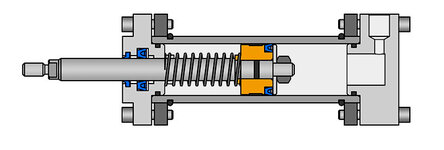sagarnayak123
Newbie
Hello ,
In my project i am using stepper motor with nrf52840 controller so i want to run my stepper motor for particular time in sec like for example in my application i want o expel the fluid from the tube by using this stepper motor. out of 10ml fluid i need to expel 2ml /sec it means to expel 10ml it should takes total 5 sec.
this is how the motor should works based on the parameters which user can input. so to implement this i got stuck and if anybody have idea on this please help to resolve this.
thank you.
In my project i am using stepper motor with nrf52840 controller so i want to run my stepper motor for particular time in sec like for example in my application i want o expel the fluid from the tube by using this stepper motor. out of 10ml fluid i need to expel 2ml /sec it means to expel 10ml it should takes total 5 sec.
this is how the motor should works based on the parameters which user can input. so to implement this i got stuck and if anybody have idea on this please help to resolve this.
thank you.
